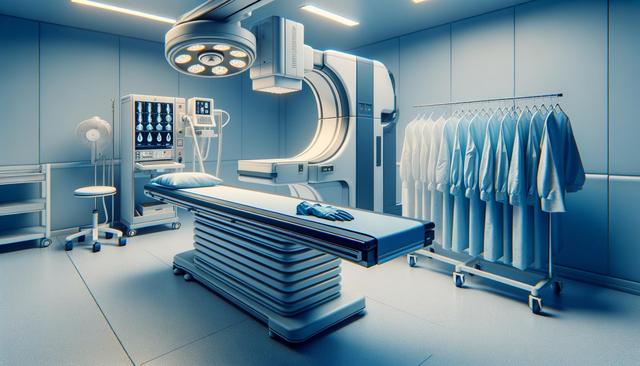The Role of X-ray Technicians in Diagnostic Imaging
X-ray technicians play a critical role in healthcare by operating imaging equipment that helps physicians diagnose and treat medical conditions. These professionals are often the first point of contact for patients undergoing diagnostic imaging procedures, making their work essential not only for accurate medical assessments but also for patient comfort and safety. In facilities offering diagnostic imaging services, X-ray technicians work alongside radiologists, nurses, and other healthcare providers to ensure that imaging results are both precise and timely. Their responsibilities include preparing patients for procedures, maintaining equipment, and managing digital imaging records.
In today’s healthcare settings, the demand for skilled X-ray technicians is rising due to the growing reliance on imaging techniques for diagnosis. Whether in hospitals, outpatient clinics, or specialized imaging centers, these technicians must balance technical expertise with interpersonal skills. This is especially important in environments where patients may be anxious or in pain. By fostering a reassuring atmosphere and clearly explaining procedures, X-ray technicians contribute significantly to the overall quality of patient services.
Work Environments and Equipment
X-ray technicians primarily work in facilities equipped with advanced imaging technology. These can include:
- Hospitals with full-service radiology departments
- Private imaging centers
- Urgent care clinics
- Orthopedic and specialty medical offices
The equipment they operate ranges from standard X-ray machines to complex computerized tomography (CT) and fluoroscopy systems. Each type of imaging device requires specific training, which makes ongoing education crucial. Technicians are responsible for ensuring the equipment functions correctly, which includes performing routine maintenance checks and reporting any malfunctions. Safety protocols are also a significant part of their job, as they must protect both patients and themselves from unnecessary radiation exposure through the use of shielding and proper technique.
As imaging technology evolves, X-ray technicians must stay up to date with the latest advancements. This includes understanding how to use digital imaging systems and Picture Archiving and Communication Systems (PACS), which allow for the electronic storage and retrieval of images. Familiarity with these systems enhances workflow efficiency and improves communication between departments, ultimately benefiting patient care.
Education and Career Pathways
Becoming an X-ray technician typically begins with completing an accredited radiologic technology program. However, many aspiring professionals are now turning to flexible learning options such as a Radiology Online Degree or enrolling in Radiology Online Courses. These programs allow students to gain foundational knowledge in anatomy, patient positioning, radiation safety, and imaging procedures while accommodating their schedules. Online learning platforms have made it easier for individuals to enter the field without disrupting their current employment or family responsibilities.
After completing their education, graduates must pass a certification exam, often administered by a national or regional radiologic technologist board. Certification ensures that technicians meet established standards of competency and are qualified to work in clinical settings. Some technicians may also choose to specialize in areas like mammography, MRI, or CT imaging, which often requires additional training and certification. Pursuing an Online Radiology Degree can be a strategic step for those looking to advance their careers or move into supervisory roles.
Patient Interaction and Service Quality
While technical expertise is essential, patient interaction is equally important for X-ray technicians. They must be able to communicate clearly and compassionately with individuals of all ages and backgrounds. This includes explaining procedures, positioning patients correctly, and responding to questions or concerns. In facilities offering diagnostic imaging services, the quality of the patient experience can often influence overall satisfaction with care.
Some of the key responsibilities that impact patient service include:
- Creating a safe and comfortable environment
- Adhering to privacy and confidentiality standards
- Minimizing the need for repeat imaging through precise technique
- Collaborating with physicians for accurate diagnosis
Effective communication and professionalism can significantly reduce patient anxiety, particularly in emergency or high-stress situations. In many cases, X-ray technicians must also manage logistical tasks such as scheduling, documentation, and image archiving, all of which contribute to a smooth and efficient patient experience.
Professional Development and Industry Trends
As healthcare evolves, X-ray technicians must adapt to new challenges and opportunities. Continuing education is vital for keeping up with technological advancements, regulatory changes, and best practices in patient care. Many working professionals choose to enhance their credentials through Radiology Online Courses, which offer in-depth training on new imaging technologies and techniques. These courses can be taken individually or as part of a more comprehensive Online Radiology Degree program.
Emerging trends in the field include the integration of artificial intelligence (AI) in imaging analysis, increased use of mobile imaging units, and the shift toward value-based care. These developments are transforming how diagnostic imaging is delivered and evaluated, requiring technicians to be more versatile and data-savvy. By staying informed and continuously improving their skill set, X-ray technicians can remain competitive and effective in a changing healthcare landscape.
Professional organizations also provide valuable resources, including networking opportunities, certification renewal, and access to the latest research. Engaging with these communities helps technicians stay aligned with industry standards and enhances their ability to deliver high-quality patient care.
Conclusion: Building a Lasting Career in Diagnostic Imaging
For individuals interested in combining technology with patient care, a career as an X-ray technician offers a rewarding and dynamic path. Facilities offering diagnostic imaging services rely heavily on these professionals to ensure accurate, timely, and compassionate care. Through options like a Radiology Online Degree or specialized Radiology Online Courses, aspiring technicians can build a solid educational foundation while maintaining flexibility in their learning journey. As the healthcare industry continues to innovate, the role of X-ray technicians will remain essential, offering long-term career potential and meaningful contributions to patient health.




Leave a Reply